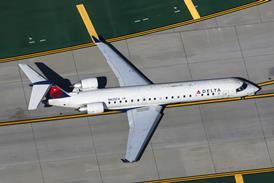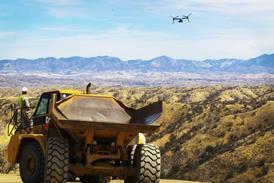GUY NORRIS / LOS ANGELES
Tests show concept capable of operating at speeds up to Mach 0.93, offering alternative to ditched programme
Boeing has revealed preliminary results of another high-speed blended wing body (BWB) study that indicates a modified variant of the concept can operate feasibly at cruise speeds up to Mach 0.93, well above the baseline version's original design speed of M0.85.
The result could offer Boeing an alternative low-cost, high-speed option to the Sonic Cruiser, although the company says the higher speed of the BWB variant comes with a performance penalty. Insiders suggest, however, that since the Sonic Cruiser was axed, a M0.9 "sweet spot" discovered during the evaluation could become the focus for future BWB efforts.
Ironically, the high-speed study was launched as a direct result of the Sonic Cruiser programme and the company's "new emphasis on increased speed". Boeing says the natural area ruling of the BWB and its low wave-drag make the aircraft a good option for "performing at lower cost than a conventional airplane when increasing to higher subsonic speeds".
Eight different BWB configurations, all sized for 258 passengers, were studied using computational fluid dynamics (CFD) and Wing Multidisciplinary Optimisation design (WingMOD) covering Mach numbers of 0.85, 0.90, 0.93 and 0.95 and ranges of 13,875-16,465km (7,500-8,900nm).
Initial CFD design studies showed that wing planform changes were needed to reach the higher cruise speeds, and for the M0.93 case these included a 5° increase in leading edge sweep across the entire span, plus an additional 3° increase in leading edge sweep for the inboard section. However, the WingMOD analysis revealed a balance problem with this design, so using this second code, the BWB was further refined by reshaping the entire plan-form. The centre of gravity is further aft in the latest 13,875km design, dubbed BWB 6-250B, which increases the lift/drag ratio and improves fuel consumption. Take-off weight also fell by almost 7% compared with the revised Mach 0.85 baseline design, while operating empty weight fell by 5.5%.
The study revealed that aerodynamically, a M0.90 BWB configuration "may be optimal" with a peak Mach number times lift to drag ratio occuring between M0.89 and 0.91. It adds that further CFD work will be required to quantify drag from propulsion-airframe interference for all the high-speed options.
Source: Flight International























